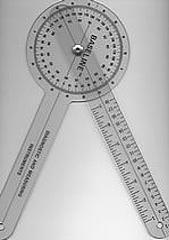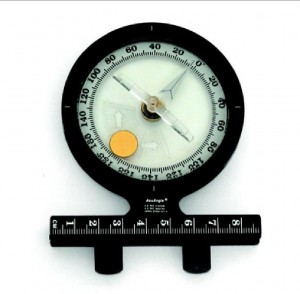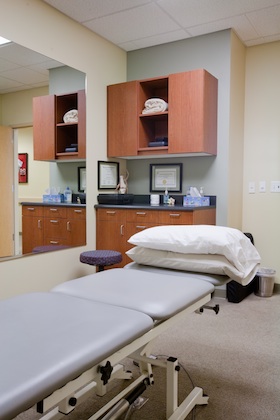The role of a physical therapist is to help you regain your function and allow you to return to your life of work, recreation, and other daily activities. A key element of this role is determining whether you have the appropriate range of motion (ROM) available to accomplish your daily activities without pain. Until recently, physical therapists used a device known as a goniometer to measure this range of motion at a joint. Now, physical therapists measure ROM in a different way. This change was brought about by studies showing ROM measurements made using a new tool, known as an inclinometer, are more accurate, precise, and reproducible than measurements made using goniometers. According to the American Medical Association’s Guides to the Evaluation of Permanent Impairment (Third Edition), the inclinometer has been adopted to measure spinal ROM. Physical therapists have also found that inclinometers are easier to use, and provide new and more useful information.
Old School
A goniometer looks a bit like a protractor you may have used to measure angles in geometry class, but with arms, like the type of compass used for drawing circles. The arms of a goniometer intersect at a single axis or pin:
To measure the ROM at a joint with a goniometer, the patient moves his or her body part to the position directed by the therapist (i.e bend your knee). The therapist aligns the arms of the goniometer with the bones surrounding the joint and aligns the pin with the joint axis. Because the therapist cannot hold the goniometer directly against the bones, bone and joint axis positions must be estimated. The angle indicated by the goniometer is recorded. Goniometer measurements typically require the joint to be moved from the beginning of its range to the end of its range of motion. For example in the knee, a measurement is taken when the joint is fully bent and then again when it is fully straightened . Because the positions of the bones and axis points must be estimated, each reading made with a goniometer introduces error into the measurement. Normal joint mechanics introduce another source of error into goniometer measurements: unlike a door hinge rotating around a cylindrical pin, a joint rotates around the ends of the bones, which are not perfectly round. Therefore the joint axis itself moves, making the estimation of the axis position more difficult.
New School
No such estimates or alignments are necessary with an inclinometer. Inclinometers have dials or digital readouts that display the angle at which the inclinometer is situated relative to the line of gravity.
To use an inclinometer, the therapist holds the instrument on the patient, who begins in a standard starting position. The therapist zeroes-out the inclinometer and then instructs the patient to bend the joint through its ROM. The inclinometer’s final reading is the ROM measurement. The inclinometer never leaves contact with the patient and the axis does not need to be identified.
The accuracy of ROM measurements taken using inclinometers can be estimated by comparing their measurements with those taken from X-rays, which allow very direct joint angle measurements. Mayer et al. showed ROM measurements of the spine made using inclinometers are statistically similar to readings determined using X-rays. Keeley et al. showed repeated ROM measurements made using inclinometers yield very reliable values.
Unlike goniometers, inclinometers can be used in pairs to gain even more diagnostic information during patient evaluations. For instance, bending forward to touch the toes is a “composite” motion, that is, some of the motion comes from the hips and some comes from the lower back. When a patient has pain upon bending forward, the physical therapist can use two inclinometers at once to determine whether the lower back and hips are each contributing the proper amount of flexibility to support the movement. The inclinometer readings may indicate that the painful lower back is compensating for the inflexible hips. The therapist can then begin an effective course of physical therapy to relieve the lower back pain by restoring the patient’s hip function and flexibility.
To learn more about inclinometers or see how your spinal range of motion measures up, contact Physical Therapy of Los Gatos at (408) 358-6505.



{ 1 trackback }
Comments on this entry are closed.